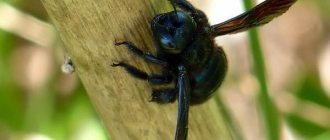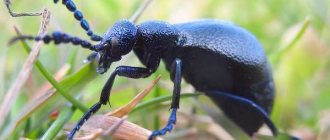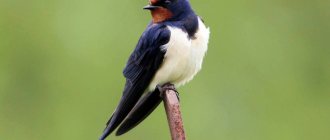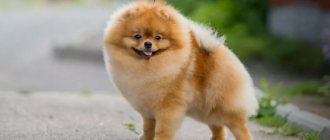When hearing the word “grasshopper,” many people remember a simple children’s song and imagine a green, harmless creature that “doesn’t even touch a booger.” Alas, the grasshopper is a predator. And not only boogers, but also flies, ticks, butterflies - their favorite delicacy.
The grasshopper is an arthropod insect belonging to the order Orthoptera. There are about seven thousand species of them on the globe.
Habitats
The grasshopper can be found in every corner of the earth except Antarctica. He prefers green edges, valleys, gorges in which lush grass grows. In Central Asia, it lives high in the mountains, trying to hide among plants from the scorching sun.
In the Alps, the grasshopper chooses high-mountain meadows, loves open spaces, and avoids forests. You can meet a grasshopper in the Far East and Africa, in Denmark and Finland, in England and in the sultry jungle.
Keeping at home
In some Asian countries, this insect is a popular pet, along with the cricket. Pleasant melodies are produced by male singing grasshoppers. Breeders from China have even been able to develop several varieties that sing differently from their wild ancestors. The cost of a particularly “euphonious” individual often reaches $25 .
Grasshoppers that live in mid-latitudes can also be kept indoors. Their food is ears of cereals, lettuce, pieces of fruit and berries. Small bugs and other living creatures are eaten at night, but if the individual is very hungry, hunting occurs at any time of the day.
When the time comes for females to lay eggs, they should be seated one at a time, otherwise the fight for territory can lead to cannibalism. And the males get along peacefully with each other and chatter until the fall.
Color palette
The color of a grasshopper depends on its habitat and species. The grasshopper living in Russian meadows and clearings or in the tropical zone has a camouflage green color. A desert grasshopper or one that has chosen a marshy area is spotted and brown.
South African grasshoppers camouflage themselves with the color of rocks to escape predators. Striped and peacock colors are also found. But orange and red grasshoppers came to Russia from China, and you can only admire them in greenhouses.
Varieties and description
These insects are distinguished by a rare variety of behavioral and external factors. In total there are more than 6 thousand of these species. And all of them have their own characteristics:
- Plump, included in large view. Males are up to 9 cm in length, females are up to 7 cm. The name is due to their appearance. The fat man looks quite fat and well-fed. Thanks to this, the torso visually appears short. It is at the stage of extinction.
- Sevchuk Servilya is a small species. The body reaches about 2 cm, it is brown, wide and dense. There are yellow spots on the pronotum. The lateral carinae are very prominent.
- The Far Eastern or cave grasshopper lives in greenhouses or in mountain cavities. It has a medium size, brownish-gray coloring. Mainly nocturnal.
- The Chinese greenhouse grasshopper is about 2 cm long. The short body against the background of thin elongated legs made it look like a spider. It is brown in color and covered with short hairs. The insect sheds them along with the shell approximately 12 times during its life.
- The steppe rack is a predator, but some individuals are also herbivorous. Predation does not help this species survive and it is considered endangered.
- The long-nosed grasshopper is about 6.5 cm long. The body color is brown-green. The insect got its name because of the long front part of the muzzle, which resembles a proboscis.
- The singing grasshopper grows no more than 4 cm. Another 2.5 sometimes falls on the ovipositor. The wings end level with the belly.
- The giant weta lives only in New Zealand. Weight is approximately 75 g, length - up to 16 cm. The insect has a beige-brown color. Gigantism is explained by the absence of small mammals on the island. Since weta has no enemies, all conditions for development have appeared.
- The leaf grasshopper has the longest body among field species. Lives in the Malay Archipelago.
Features of reproduction
Males attract females with loud singing. After mating, the female eats the spermatophore, which consists of seminal fluid and a sticky substance. The seminal fluid enters the female's oviduct. Eggs are laid within two to three hours. Their number can reach up to 1000.
Eggs are laid in shallow holes, on grass stems or under the bark of trees and remain there throughout the fall and winter. The larvae hatch in the spring. They molt several times and, bypassing the pupal stage, immediately turn into a grasshopper.
Some species of female insects do without males and lay unfertilized eggs, from which only female grasshoppers grow.
Adults
By July, the larva molts for the last time, becoming a full-fledged winged insect. On hot days, they tend to be motionless, with their forelimbs extended. This is similar to the pose of their close relative, the praying mantis. Like it, the grasshopper has grasping tentacles on the inside of its legs, but they are smaller. If a hunter comes across a careless victim, the grasshopper quickly kills it with a bite to the back of the head, eats it, leaving only the wings and head, and freezes again.
Males sometimes sing short trills in an attempt to win over females; most often, courtship occurs at midnight. The sound that a grasshopper makes is like hitting a metal surface, sounding barely audible, as if from afar. That is why the insect got its name.
Before sunset, the activity of adults increases . The grasshopper is helped to navigate in the dark by its whiskers and keen hearing. Some victims are twice the size of the hunter, but a powerful bite to the back of the head leads to the death of any of them. Even well-flying cicadas cannot escape. In areas with sandy soil there is another hearty food - khrushchi. At night, they begin to fly out en masse, and most of them, appearing on the surface, immediately turn into prey.
For some reason, only females show predatory tendencies, while males have more of a sweet tooth. Fallen berries or fruits are the main delicacy; the stronger individual does not allow competitors to eat, trying to drive them away with blows from the hind limbs. If the hunt is unsuccessful, the insect is content with plants. That is, the grasshopper is an omnivore.
Favorite food
A grasshopper will gladly swallow a caterpillar, a butterfly, small insects, larvae, and even representatives of its own species that turn out to be weaker than it. But he does not disdain plant foods, namely: grass, stems, flowers, cereals and the like.
Oddly enough, grasshoppers even bite people (though not to get enough) who threaten them. The bite of a grasshopper is painful, because the insect has strong, powerful jaws.
General information
The grasshopper belongs to the class insects, family - grasshoppers, order - orthoptera. Many species are characterized by an elongated body, a laterally compressed head, and two faceted oval eyes. Powerful jaws allow you to tear off pieces of food. Taking into account the variety, the body length is 1.4−16 cm.
Many insects have hind limbs designed for jumping. The femurs are thickened at the base, the tibiae are elongated, and there are movable “spurs” and spines. The thighs of the hind leg are connected to the lower leg "knee back", this helps grasshoppers to jump great distances. The length of the jump is often 25 times the body size. The remaining two pairs of insect limbs are of the running type.
Sensitive antennae play the role of touch; in certain subspecies they are much longer than the body. Some insects have two pairs of wings, which they use during flight, and also as protection from negative environmental factors.
In structure, grasshoppers are similar to the order of locusts . The main differences: female locusts do not have an ovipositor, and the insects have shorter whiskers.
The most popular species in our country is the green grasshopper. A beautiful and rather large insect lives in places with high grass. Its protective coloring makes it practically invisible - if the grasshopper stops moving and singing, it is difficult to identify. On the sides of the body there is a lighter stripe, reminiscent of a cereal stem, this perfectly camouflages the insect. The female is much larger than the male, and also has a saber-type oviposition.
The grasshopper is very shy and secretive. The disturbed insect either climbs into the thick grass, or jumps, opening its transparent wings, and flies as far as possible from its pursuer.
It is very difficult to observe grasshoppers in their natural environment, because much is unknown about them, in particular about the developmental characteristics of insect children and the specifics of their diet.
Loud-voiced singer
The grasshopper chirps on a cool day or in the evening, and occasionally at night. This happens thanks to its elytra, which act as a kind of musical instrument.
As a result of vibration, a sound appears that intensifies when the insect's wings rise. Each type of grasshopper has its own melody.
It is called the music of nature. During the mating season, males make a peculiar crackling sound, which females cannot do.
Sensing danger, the grasshopper immediately falls silent. This is how he escapes from his enemies. To hear a clear-voiced singer, you should not talk loudly or make sharp sounds. Listen to the silence and you will hear the trill of a grasshopper.
Nutrition
Among the small insects that inhabit the Earth, there are also cruel predators. Grasshoppers are one of them. These are natural, skilled hunters. They try to grab their prey with lightning speed, using their forelimbs. They feed on larvae as well as small insects, eating small locusts, mites and aphids.
Grasshoppers also eat beetles, butterflies, and caterpillars. In cases of shortage of other types of food, especially if they find themselves captive in a confined space, they are capable of attacking their own relatives in a wave.
Flowery grasshopper eating leaves
And sensing luck, the stronger will feast on the weaker with appetite, without hesitating at all. To get their required dose of nutrients, salts and protein, these insects are able to consume carrion and feces.
Grasshoppers can be attracted to plant leaves from plant food, but only on young shoots. There are species for which this type of nutrition is the main and even the only one.
However, in this case, the insatiability of grasshoppers sometimes harms cultivated and forest plants. But by eating harmful insects, in particular the Colorado potato beetle, which destroys potato plantings in huge quantities, grasshoppers turn out to be very useful.
Pest or helper?
A grasshopper can bring both harm and benefit to people. For example, it destroys buds, flowers and leaves of vineyards, tobacco plants, citrus fruits, and tea.
Summer residents also do not want to see grasshoppers on their plots, since its larvae are terribly voracious, and during molting they feed on young shoots.
However, grasshoppers can also be useful. They perfectly fight the Colorado potato beetle, which often attacks potatoes, eat harmful larvae that mutilate tree bark, and exterminate insects that eat plants.
Interesting Facts
The most interesting fact is that certain species can only be female. Moreover, these females lay eggs. However, they also produce exclusively females.
Some species of grasshoppers are popular food items in most Asian countries. They contain large amounts of protein and other nutrients. For European people, eating insects is considered something repulsive and causes strong disgust. But many peoples are happy to feast on such healthy and wholesome food.
Main dishes:
- insects fried in sunflower oil with garlic;
- fried dried grasshoppers taste like peanuts;
- deep-fried insects;
- grasshoppers in marinade;
- pancakes from assorted insects.
To catch the required number of grasshoppers, you need to go out with a net to a lawn with tall green grass.
The nutritional value of the insect is approximately 155 kcal per 100 g of product. The average amount of protein is much higher than in meat products and is 30 g.
In the near future, locusts, grasshoppers, mealworms, peacock and silkworm larvae, and crickets may very well become common and popular food items. Already today, many well-known manufacturers add insect flour during the production of products, thereby increasing its nutritional value and energy value.
If you fight, then how?
Plants should be located away from grasshopper egg laying sites. If the green warbler nevertheless settles on the site, pesticides, means for killing beetles, and various kinds of bait with poison are used.
But there are also mechanical methods of protection: digging up the soil in the fall, and loosening the rows more often in the summer.
Today, there are already biologically pure biological products that help fight insects. They are absolutely harmless to humans and animals.
Let's not forget about the birds, for whom the grasshopper is a real delicacy. If the area has been chosen by titmice, then the jumping singers will not stay there for long.
Adaptation to the environment
Many animals eat grasshoppers, so they have to fight for life in all sorts of ways. The main defense is their powerful jumping legs, the ability to hide, the dismembering protective coloring, the spines with which they signal to their relatives about a threat, and the ability to bite. For example, a leaf grasshopper can bite through human skin until it bleeds. But there are also lesser-known protection options:
- When in danger, some species tear off their limbs. Insects easily part with one or two legs.
- Protective coloring may seem like a primitive protective method. Insects in nature also use other complex camouflage options. Mimicking leaves is a favorite technique that is often used. For example, the species Cycloptera elegans strongly resembles a dry leaf.
- Another genus Pterochosa is similar in color, pattern, and position of the veins to a withered and discarded leaf. There are spots on the wings that resemble pest damage to the foliage.
- Some varieties imitate a twig that sticks out of the trunk or lichen growths. There are species that can scare away the enemy with a squeal or cause disgust by belching their gastric juice.
Photos of grasshoppers
Literature
- Mikrula. Photos of a grasshopper.
- Biology. 7th grade. V. M. Konstantinov, V. G. Babenko, V. S. Kuchmenko, Ventana-Graf, 2009.
- Biology. Animals. 7th grade. V.V. Latyushin, V.A. Shapkin, -M., Bustard, 2009.
- B. M. Mamaev, School atlas - identification of insects., M., Education, 1985.
- School handbook. Biology. Yu. A. Belousov, Yaroslavl, 1998.
- A textbook on biology for applicants to universities. A. V. Ganzhina, Minsk, Higher School, 1978.
- V. P. Gerasimov., Invertebrate animals, studying them at school., Education, 1978.
- P. Marikovsky “To the young entomologist.” M.: Children's literature, 1978. - pp. 50-51.
Appearance
Externally they also differ. Grasshoppers are most often green. This color helps them camouflage themselves in foliage to make it easier for them to forage for food.
They have a movable head with sharp jaws. Powerful hind legs, short front legs. Incredibly long whiskers, which locusts do not have.
The body of the locust is brown or yellow, although it can be green, brown, or gray. The antennae are short, as long as the head. The hind legs are shorter but stronger. We hope it is now clear how to distinguish a grasshopper.
Name
A little interesting information about the origin of the name of the insect:
- The grasshopper is an insect that can be found everywhere in Russia.
- The name grasshopper is used only in Russia. In other countries, the name of the insect is associated with its ability to jump high. In Bulgaria, the grasshopper is called “jumper”, in Belarus it is called “horse”.
- In Rus', the grasshopper has long been called a dragonfly or filly.
- In the poem "Jumping Dragonfly" the main character was not a dragonfly, but a grasshopper. Dragonflies do not jump, and at the time when the poem was written, many types of insects were called dragonflies, including grasshoppers.
Chirping, what is this?
Above we briefly explained how a grasshopper chirps. Now let's look at the process in a little more detail.
The left elytra is equipped with a membrane with a special serrated vein, which is called stridulatory. It is she who plays the role of a “musical reed”.
On the right there is a resonator membrane. To produce a chirping sound, you need to vibrate the elytra.
The melodies and volume are different, depending on the type of insect. The sounds are most often made by the male. However, there are several species where the female shows her musical abilities.











